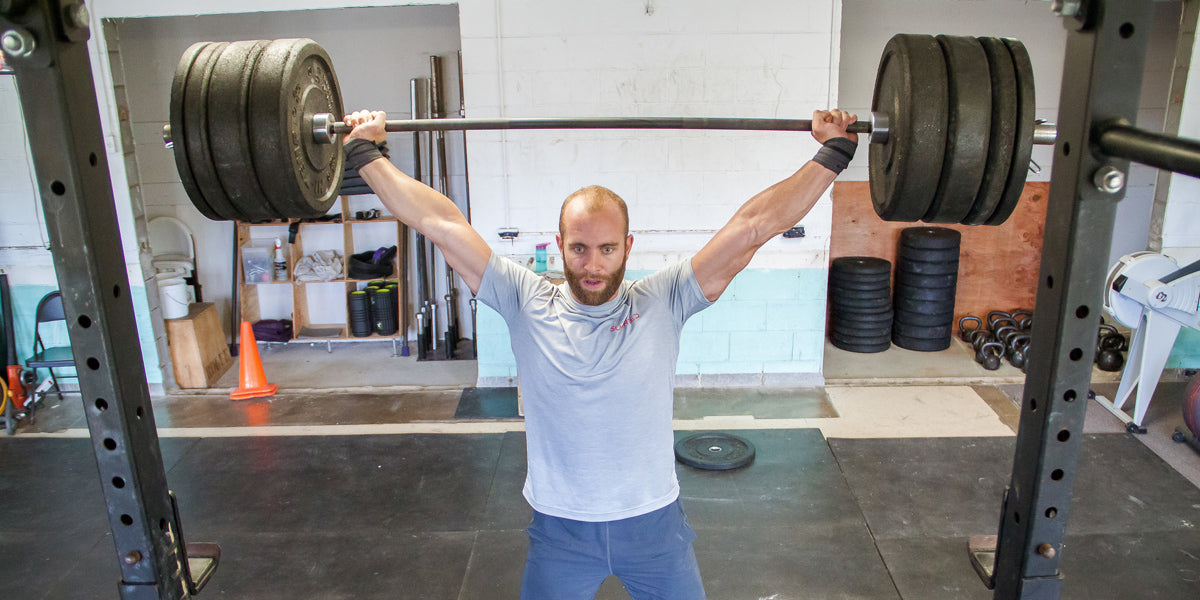
Strength has many benefits, both inside and outside of the gym. Becoming stronger is a goal of many people and there are lots of different methods you can follow to find what works for you.
How does the body get stronger?
The body gets stronger after a progressive overload. This means putting the body under pressure and stress so that it has to adapt and change to meet the needs you are giving it. An example of this is lifting a weight you haven't lifted before or by doing more reps than you have done before.
Stress is a key reason for your body to change, and having observed soldiers returning from World War One, Physiologist Walter Cannon used the popular phrase ‘fight or flight’ to describe the hormonal reactions in our body in response stress. In addition to life threatening situations, more mundane activities such as exercise also evoke a response.

How do you get physically stronger?
In order for your muscles to get bigger and stronger, you have to apply overload. To overload means that the muscle experiences a load above and beyond what it previously adapted to in order to trigger the sequence of a new adaptation.
When you force your muscles into overload by lifting weights, a chain reaction of cellular events goes into full swing, leading to an increased production of contractile proteins. This process is called anabolism and also leads to the muscle increasing in size.
Physically, when you lift weights you are creating small 'satellite' tears in your muscles, which then repair and grow stronger when you eat and sleep. This is why you feel aches and pains after a particularly demanding session, and why correct nutrition and sleep are so important.Men have more testosterone than women and so will have bigger, stronger muscles. Women who don’t use anabolic steroids or hormones won’t gain male sized muscles as they simply don’t have the hormones it requires.
Men have more testosterone than women and so will always have bigger, stronger muscles. Women who don’t use anabolic steroids or hormones won’t ever gain male-sized muscles as they simply don’t have the hormones it requires.

How can you increase your strength?
If you want to become a lot stronger, it is best to lift heavy weights in a low rep range. Contrarily, if you are looking to be more slim-lined and have better endurance, you should opt for higher rep ranges. A typical rep range guideline is as follows:
|
Rep Range |
Function |
|
1-3 |
Max Strength |
|
1-6 |
Strength/ Speed/ Power |
|
4-8 |
Functional Hypertrophy |
|
8-12 |
Structural Hypertrophy |
|
12 + |
Endurance |
So for example, if you are looking to become the strongest guy in the gym, you need to be lifting as much as you can for just 1-3 reps each time you hit the gym. On the other hand, if you wanted to be a bit leaner and slimmer and have more endurance, you'd want to do 12 reps with a moderate weight.
It’s important to remember that each rep range requires a different amount of rest, with the strength rep ranges requiring much more rest (up to 5 minutes) between each set. It is also important not to overload the muscles every single time you train for weeks on end as this is likely to lead to overtraining and injury. Take a de-load week around once a month to allow your body to recover fully.
What's the best workout for muscular strength?
5x5 is a training style that is often claimed to be the best for gaining strength. 5x5 consists of completing 5 sets of 5 reps for each exercise. Typically, you would do 5x5 (five by five) on big compound exercises like squats and deadlifts for best results.
Stronglifts have created a 5x5 workout which incorporates all the major compound lifts, 3 times per week. The main lifts are the Squat, Bench Press, Deadlift, Overhead Press and Barbell Row. The stronglifts training regime only requires 3 training days per week, with a day's rest between each session.
You do three of these exercises each workout, three times a week, for about 45 minutes per workout, squatting every workout, three times a week.
WORKOUT OPTIONS: You will need to alternate between workout A and workout B. So for example, workout A would be performed on Monday and workout B on Wednesday, and then back to A on Friday.
| Workout A | Workout B |
|
Squat 5x5 |
Squat 5x5 |
|
Bench Press 5x5 |
Overhead Press 5x5 |
|
Barbell Rows 5x5 |
Deadlift 1x5 |
|
Pushups 3 x Failure |
Pullups 3 x Failure |
- Add 5lbs. total weight to each workout until you can't get 5 reps on all 5 sets anymore.
- If you happen to stall on an exercise and cannot perform 5 reps then take off 10% of the weight.
- Continue adding 5lbs total weight each workout until you stall again.

Can I lift while pregnant?
You can certainly continue training and lifting weights while pregnant, it's just important to listen to your body and not put yourself under more strain than you usually would. When you see women doing insane lifts while pregnant, it's because they were able to do that before they were pregnant. If you've never lifted a weight before, during pregnancy is not the best time to start.
Benefits of lifting weights while pregnant
Mental toughness. Being strong during pregnancy can help develop mental toughness which prepares for labour and motherhood. Mother of three and Coach Nicole Crawford explains “During labour, your body is going to do things you didn’t know it could do and feel stuff you didn’t know you could feel. Your body is going to tell you it’s not fragile and it’s going to push this baby out whether you like it or not. Keeping up with a strength training routine helped me build confidence in my body and its abilities. If you spend your whole pregnancy thinking there’s something wrong with your body, you’re going to freak out when you start having hard contractions, just like if you go into a workout thinking it’s too hard, you’re going to struggle to get through it during the toughest parts”.
Decreased Pain and Pregnancy Discomfort. Having a strong core and lower back will help your body to cope as it goes through the changes required of pregnancy. Whilst strength training in the wrong way can increase pain, whether you're pregnant or not, during pregnancy weight training with correct technique can actually ease discomfort. Lifting weights with good form on a regular basis can help prevent both back pain and sciatica as well as help you to maintain good posture and carry your extra weight more functionally.
Maintain the stamina for labour. Labour can be an endurance event involving strength and stamina greater than any workout. Maintaining a fitness regime can help you to fight through the labour, the fitter you are the better your body will uptake Oxygen. Julie Tupler, author of Maternal Fitness, says “If your abs are weak, you won't be able to push effectively."
Being strong for menopause
Menopause is probably the most important time in a woman's life for her to be physically strong. Training for strength during menopause is essential to ward off osteoporosis and brittle, fragile bones. Strong muscles reduce the possibility of injuries, improve body composition, provide a sense of confidence, and allow you to recover more quickly from physical activities. As women age, their muscle mass decreases anywhere from 3-5% for every year after 30. Weight training programs for women are effective in preserving muscle mass and preventing sarcopenia and the decline of metabolic rate according to the American Society of Sports Medicine.
Every decade that you lose muscle tissue, your metabolism also decreases by about 5 %. This slower metabolic rate contributes to middle-age weight gain even if you eat the same amount of calories because you don't burn the same amount of calories as your metabolism has slowed. Strength training can slow the metabolic decreases, muscle loss, and weight gain that normally occur in middle-aged women. Muscle is metabolically active tissue that requires energy (calories), everyday your body uses more than 35 calories to maintain each pound of muscle, while only 2 calories are needed to sustain a pound of fat, which is why training for strength can help to increase metabolism, as well as strength and bone density in older women.








